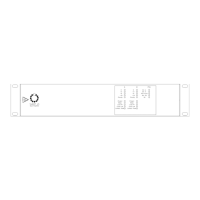
Do you have a question about the Signet Pulse 2.200 LS and is the answer not in the manual?
Describes the line level inputs, summing amplifier, and protect circuit of the amplifier modules.
Details the capacitor reservoir, fused outputs, sleep timer, auxiliary power, and battery charging circuit.
Lists and describes status indicators for each amplifier module, e.g., Output level, Protect, Sleep, Load Hi/Low.
Lists and describes status indicators for the power supply unit, e.g., AC in, DC in, PSU Fault, Aux. on, OK.
Identifies and describes rear panel connectors and controls like AC Input, Battery Input, SIP Port, Aux. Power, and Audio inputs.
Instructions for unpacking, inspecting for damage, and recommended placement of the amplifier.
Guidelines for connecting AC power, mentioning inrush current and the need for a soft start device.
Calculates required battery capacity for quiescent and alarm states, including de-rating.
Details additional battery capacity needed for ancillary equipment and aging factors.
Specifies the correct order for connecting power and battery supplies to prevent damage.
Explains how the PTT input is monitored using a resistive potential divider and fault detection.
Covers monitoring of loudspeaker lines for continuity, impedance, and earth faults, including EOL units.
Describes the SIP port and Hot Swap ports for reporting faults, including slugging and detailed fault information.
Diagram and notes for connecting the P2.200 to a SigNET IX LS prioritised mixer with battery backup.
Diagrams showing connections to a SigNET SS2n network station for both amplifier modules or a single module.
Diagram illustrating the connection of the P2.200 to an Integrity Mainframe.
Explains using the amplifier with 100V constant voltage systems and the need for line matching transformers.
Steps for verifying audio input, monitoring tone, setting output levels, and configuring load monitoring.
Configuration of Mix/Mute for monitoring tone and disabling Sleep Mode for life safety compliance.
Settings for battery monitoring and how the SIP port outputs are wired for Node A or Node B designation.
Details sensitivity, impedance, CMRR, output power, frequency response, THD, SINAD, and protection features.
Covers physical dimensions, material, weight, AC/DC input, charging voltage/current, and monitoring current.
Specifies detection frequency, type, window/sensitivity settings, EOL units, and a list of all fuses used in the unit.
